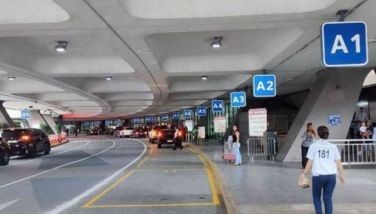Malampaya revenues: Gov’t seeks bigger share
MANILA, Philippines - Energy Secretary Carlos Jericho Petilla is seeking a bigger government share from the billion-dollar revenues of the deep-water, natural gas-to-power Malampaya project in Northwest Palawan, the landmark discovery that signaled the birth of the natural gas industry in the country.
This is among the factors the Aquino administration will consider before it decides to extend the operating license of the Malampaya consortium, he said.
“I have no problem with an extension. However, the terms cannot be the same because they have already recovered their costs,” Petilla said.
The Malampaya consortium, led by Shell Philippines Exploration B.V. (Spex), earlier asked the Department of Energy (DOE) to extend its license to explore for oil and gas in Malampaya to 2039 or by another 15 years from its expiration in 2024.
Both the DOE and Spex are in discussions over the license extension, said Sebastian Quiniones, managing director of Spex.
“We are in discussions with the government,” he said.
Petilla, however, said the department is waiting for the consortium to make its an offer that would translate to better terms and concessions for the government.
“What I’m saying is that they have to make an offer. I am asking them their terms,” the Energy chief said.
Quiniones, for his part, declined to provide details on what stage they are in the negotiations.
But he trumpeted the consortium’s track record in operating the natural gas field.
“Governments can either use us or use others. We are showing that based on our track record…we are pretty good,” he said.
At present, the Spex-led consortium is embarking on a $1-billion project to draw more gas from the gas field.
The gas field supplies power to three power plants in Batangas with a total capacity of 2,700 MW, accounting for 40 percent of supply in Luzon.
According to the consortium, the second phase of the Malampaya project entails the drilling and development of two additional wells at a cost of $250 million while the third phase involves the installation of a new platform where additional equipment and facilities will be housed by 2015 at a cost of $750 million.
- Latest
- Trending





























